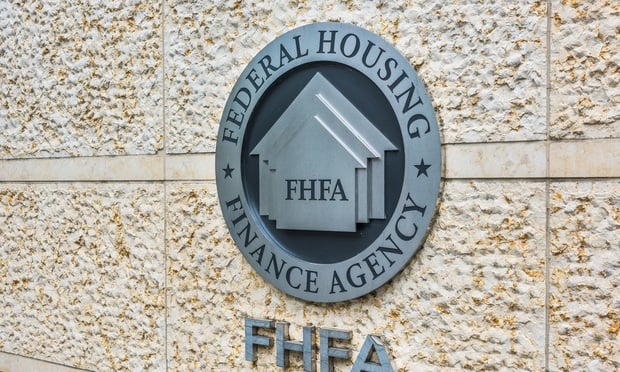➤➤ Join the GlobeSt.com ADAPT: Opportunity Zones conference September 16-17 in Baltimore, MD The new national conference series is aimed at identifying Opportunity Zones across all property types and geographic regions. This first-of-its-kind event will educate, connect and celebrate the investors, developers and owners with the people behind the planning and decision-making, such as architects, consultants, academics and, most importantly, municipal officials. Also, be sure to take a look at our current adaptive reuse and opportunity zone nomination form and submit your project! Deadline is fast approaching June 7th. Click here to register and view the agenda.
(Bloomberg) Real estate moguls, banks and money managers are rushing to capitalize on a new U.S. tax break rewarding investments in poor communities. Now, one of the biggest names in impact investing is aiming to prove the perks are about more than profits.
Jim Sorenson, a prominent Utah entrepreneur, investor and businessman, plans to announce Monday that Catalyst, a private equity firm he helped found, is raising $150 million to invest in opportunity zones. The group's first fund, which Sorenson is seeding with $10 million, will focus on developing real estate with an eye toward delivering both market-rate returns and measurable social good.
Sorenson was an early backer of the incentives tucked into the 2017 US tax overhaul. Since its passage, though, a debate has broken out about whether the benefits will turn out to be a handout to the wealthy. Nothing in the law requires investors to promote social good with their investments. Some of the more-than 8,700 zones selected are already on the upswing and attracting private capital.
For do-good investors like Sorenson, that's a chance to lead by example.
With Catalyst, the goal is to “really let my actions correlate with my speech,” he said in an interview. “This is a great opportunity to generate a return and make a positive contribution to society.”
That means avoiding zones in coastal metros favored by investors, such as New York, Washington and the San Francisco Bay Area. Instead, Catalyst has been weighing projects in cities that have struggled to attract the same levels of funding for new businesses and real estate, such as St. Paul, Minnesota; Ogden, Utah; and Louisville, Kentucky. The firm has identified 50 potential projects valued at more than $2 billion, though it plans to spread its first fund across only about 10 to 15.
“We're looking for places that have some organic growth, some underlying potential, but it's under-capitalized,” said Patrick McKenna, one of the firm's other co-founders and a venture capital investor who's focused on seeding startups outside Silicon Valley.
Clinics, Grocery Stores
Catalyst is also seeking to add services such as job-training programs, community health clinics, pre-kindergartens and affordable grocery stores to its developments. Including these kinds of amenities, the thinking goes, will enhance the value of the properties and benefit residents.
The firm is pledging to rigorously measure outcomes of its investments using a framework developed by the U.S. Impact Investing Alliance and the Beeck Center at Georgetown University. And it hopes to follow up quickly with a second fund devoted to seeding businesses that could bring jobs to the communities where it invests.
Whether the socially minded pitch attracts investors remains to be seen. A stampede of money managers—from Brookfield Property Partners LP to Starwood Capital Group—have started or plan to start opportunity zone funds, looking to capture some of the most generous investing benefits in the federal tax overhaul. Few of these, however, have made much of a commitment to quantify their social impact.
Sorenson, the son of Utah's one-time richest man, made his own name in a range of businesses from private equity and real estate to technology and life sciences. He's become a leading voice for impact investing and in 2013 endowed a center at the University of Utah to further the field. Joining him at Catalyst is Jeremy Keele, the former president and chief executive officer of the center, as well as McKenna.
Finding an Audience
Keele sees signs their pitch may resonate. Sorenson recently spoke on a panel about opportunity zones at a conference with about 1,000 people in the audience.
“The other three guys were just kinda talking about tax arbitrage,” said Keele, who attended. “Jim was talking about community health clinics and affordable grocery stores.” Afterward, the line of people waiting to speak with Sorenson was “a mile long.”
Want to continue reading?
Become a Free ALM Digital Reader.
Once you are an ALM Digital Member, you’ll receive:
- Breaking commercial real estate news and analysis, on-site and via our newsletters and custom alerts
- Educational webcasts, white papers, and ebooks from industry thought leaders
- Critical coverage of the property casualty insurance and financial advisory markets on our other ALM sites, PropertyCasualty360 and ThinkAdvisor
Already have an account? Sign In Now
*May exclude premium content© 2025 ALM Global, LLC, All Rights Reserved. Request academic re-use from www.copyright.com. All other uses, submit a request to [email protected]. For more information visit Asset & Logo Licensing.









